Concepts
API Mappings
Congratulations! You're ready to start using your Processes and let magic happen. But how can they work with your business? This is where API Mappings come in.
You can think of API Mappings as how your Processes interface with the world. It's how Unmeshed allows external entities to trigger and monitor Processes. Technically, it is done by creating uniquely named API endpoints to control the various Processes you've created.
- API Mappings expose a process definition at
api/call/{endpoint}so external systems can run your workflows in async, streaming, or sync modes (Trigger modes). - Configure the endpoint, process namespace/version, and security in the creation steps; pick fixed or dynamic webhook URLs for callers.
- Choose auth per mapping: OAuth2, UI default, or anonymous webhook access with validation tips in the webhook use case.
- Know what your process receives by default (input structure) and how to pass specific headers (including request headers).
- Shape responses for async vs sync calls,
onlyOutput, andoutputPathselectors (response handling). - See the video overview, then dive into auth scenarios and roadmap notes on rate limiting.
Trigger modes
Process endpoints published via API Mappings can be triggered in three different modes:
| Mode | Description |
|---|---|
| Async | The Process is started and the API call returns immediately with RUNNING status. This is useful for when you're expecting the Process to take a long time and are not interested in waiting for its completion. |
| Streaming | This API call is similar to async, except it keeps the connection open and streams completed steps as they're completed. This can be useful for debugging or when you'd like to follow execution on a step-by-step basis. |
| Synchronously | Starts the Process and does not return a response until the Process is completed. Useful in relatively short Processes or when the client requires to perform synchronous processing. |
Video Overview: Unmeshed API Mappings
Creating API Mappings
To create an API mapping, you need to configure several key fields:
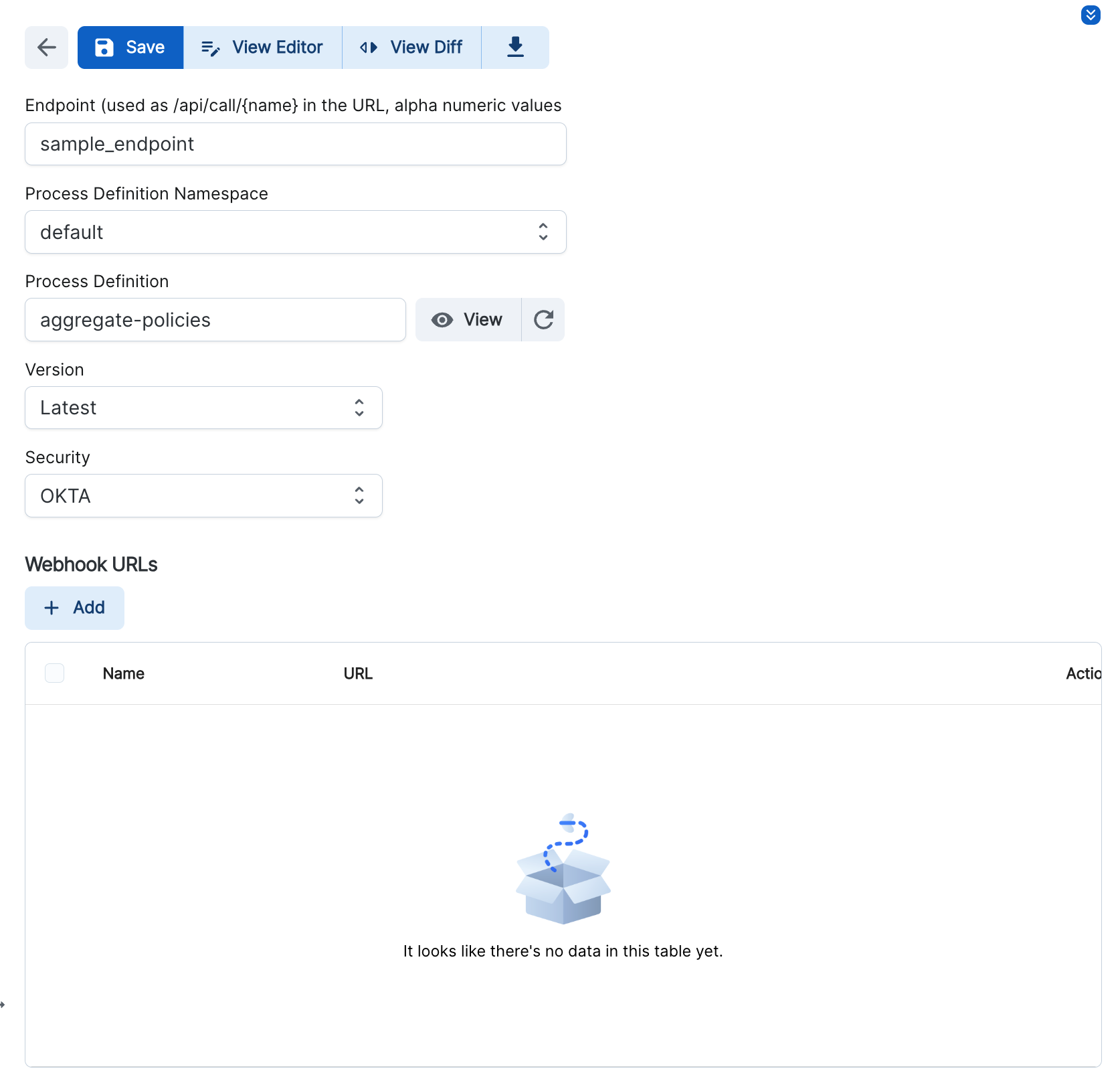
Required Configuration Fields
| Field | Description |
|---|---|
| Endpoint | The endpoint name used in the URL path (/api/call/{name}). Must contain only alphanumeric values |
| Process Definition Namespace | The namespace where your process definition resides |
| Process Definition | The name of the process definition to execute when this endpoint is called |
| Version | The version of the process definition to use (defaults to "Latest") |
| Security | The authentication mechanism for the endpoint |
Webhook URLs
Webhook URLs are the actual URL endpoints that invoke your API mapping. You can create multiple webhook URLs for a single API mapping definition, which is useful when you need different endpoints for different tools or users.
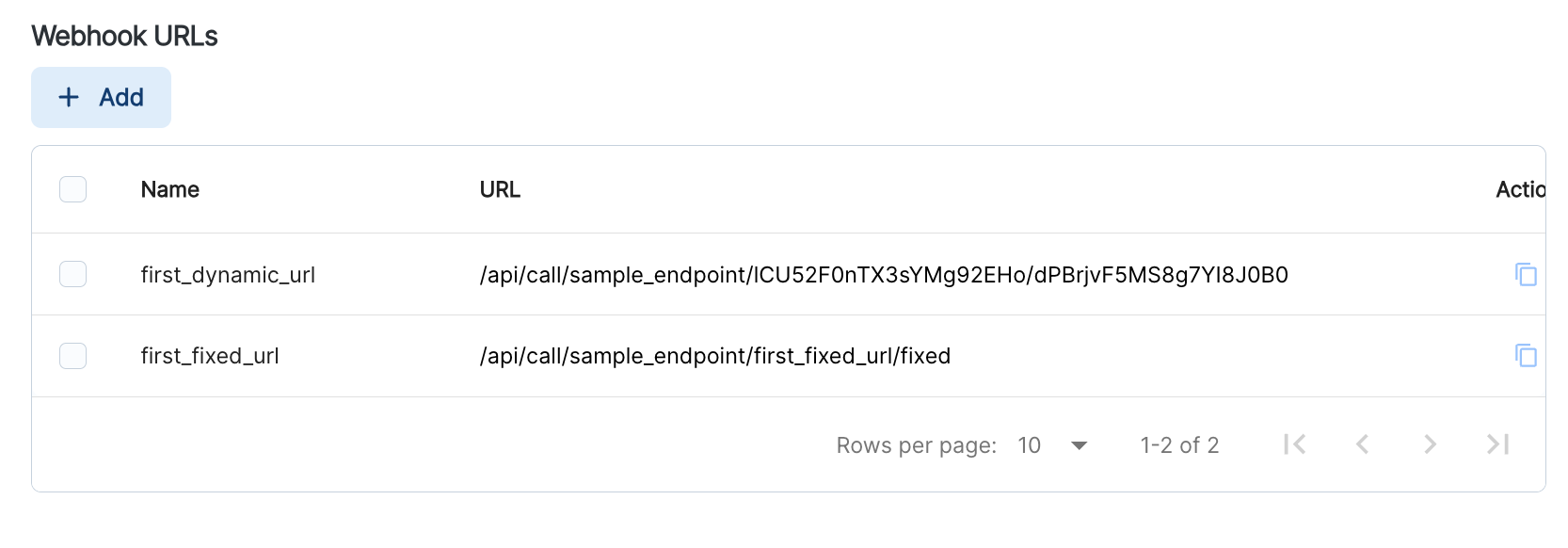
Types of Webhook URLs
Fixed URLs: Predefined, static endpoints with consistent paths
- Use case: When you need predictable, unchanging URLs
- Example:
/api/call/sample_endpoint/first_fixed_url/fixed
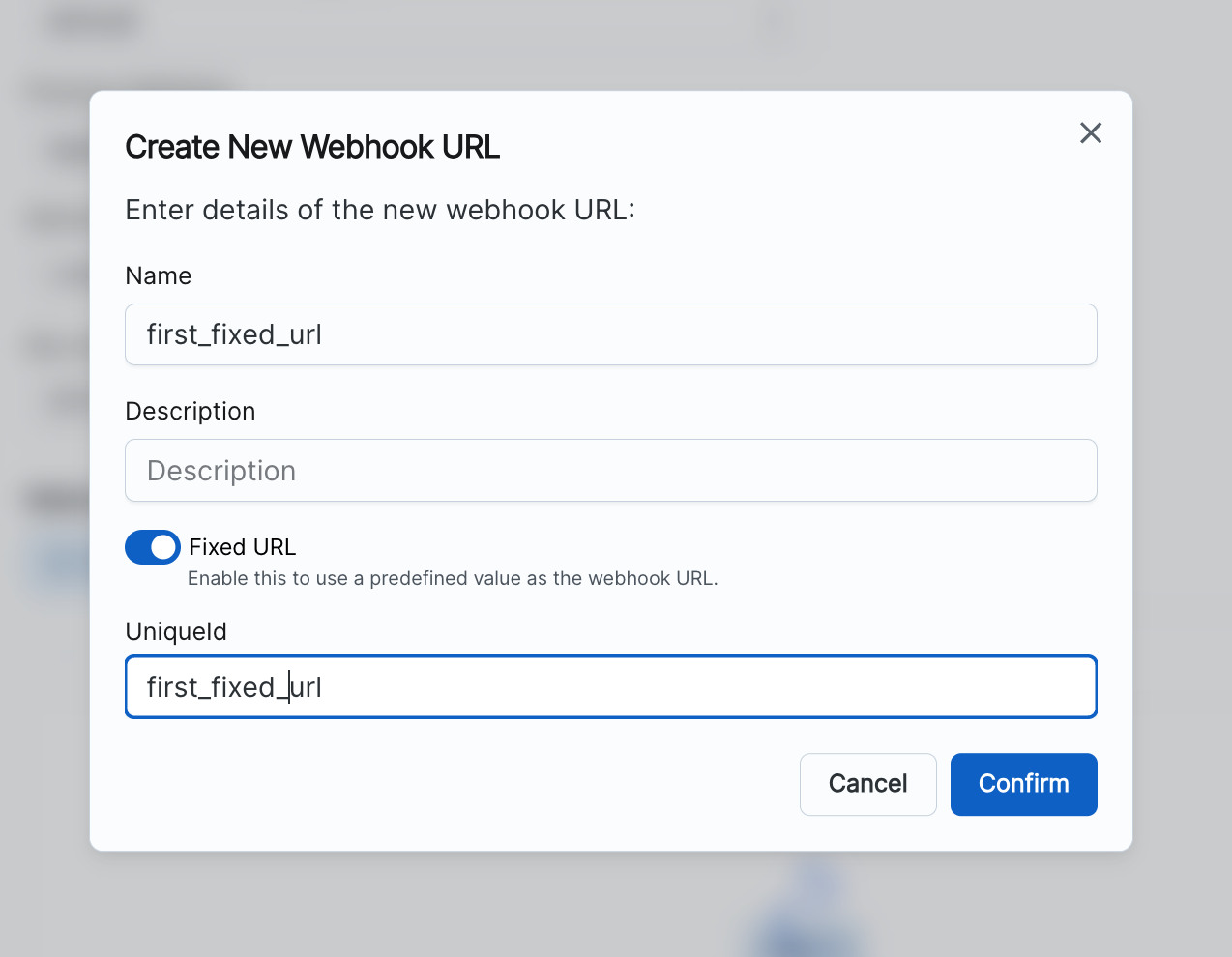
Dynamic URLs: Automatically generated endpoints with unique identifiers
- Use case: When you need unique, secure URLs for different clients
- Example:
/api/call/sample_endpoint/ICU52F0nTX3sYMg92EHo/dPBrjvF5MS8g7YI8J0BO
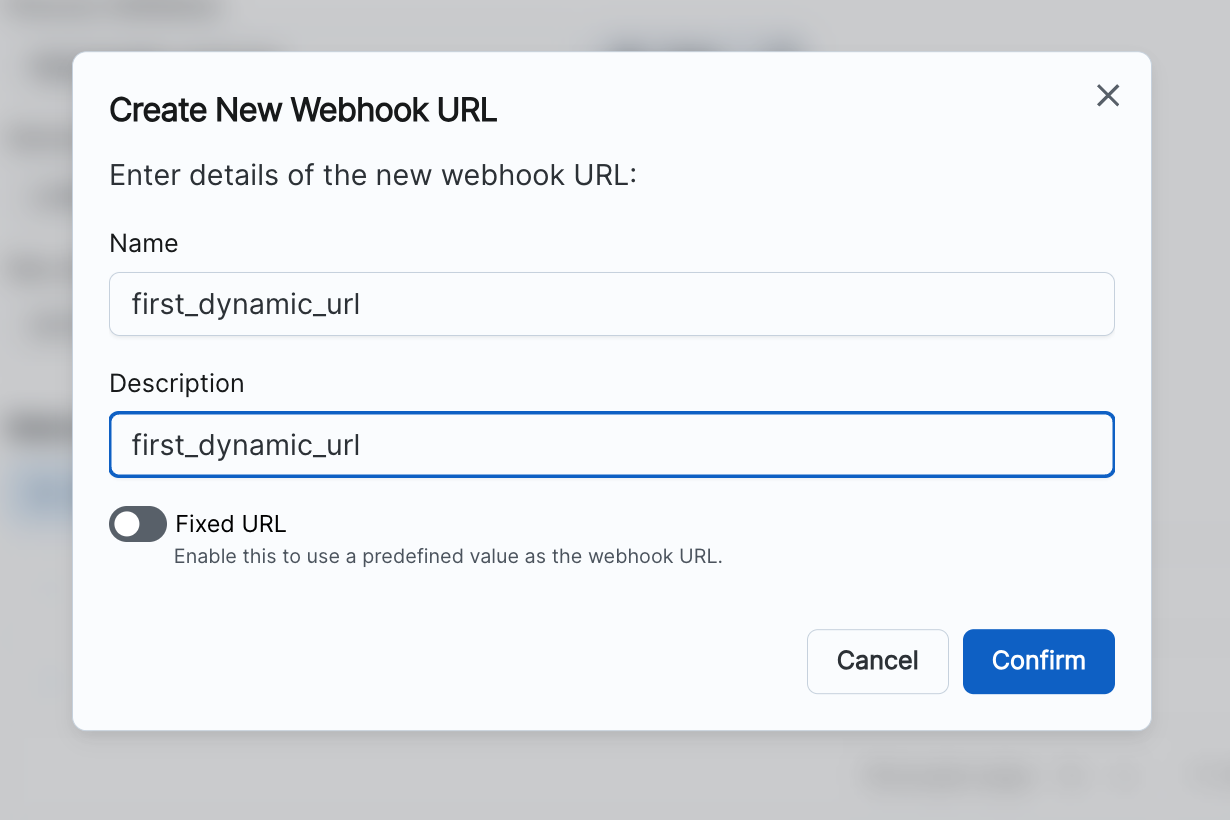
Authentication
Unmeshed supports multiple authentication methods for API mappings:
| Auth Method | Description |
|---|---|
| Preconfigured OAuth2.0 Options | Standard OAuth2.0 authentication for secure API access |
| Webhook | Anonymous access for users who have the URL |
| Default Authentication | Same auth configured for the Unmeshed UI access |
Authentication Methods Explained
Preconfigured OAuth2.0 Options: Use standard OAuth2.0 authentication for secure API access. This requires clients to provide valid OAuth tokens when calling the endpoint.
Webhook: Provides anonymous access for users who have the specific webhook URL. This is useful for third-party systems that cannot send OAuth tokens but need to call your endpoint.
Default Authentication: Uses the same authentication mechanism configured for the Unmeshed UI access. This ensures consistency with your organization's authentication setup.
Webhook Authentication Use Case
When you set security to "Webhook", the endpoint allows anonymous access for users who have the specific webhook URL. This is particularly useful when configuring endpoints as webhooks for third-party systems that cannot send valid OAuth tokens. In such cases, you can implement custom validations within your process or router process to ensure the caller is legitimate.
Default Input Structure
When a process is invoked using an API mapping URL, Unmeshed automatically provides default input data:
Default Input Fields
| Field | Description |
|---|---|
__callerIp | Array of IP addresses from which the request originated |
__webhook.authType | The authentication type used for the request |
__webhook.name | The name of the webhook URL that was called |
__webhook.uniqueId | The unique identifier of the webhook URL |
__webhook.apiEndpoint | The API mapping endpoint name |
This default input is automatically merged with any custom input you provide when calling the endpoint, making it available throughout your process execution.
Including Request Headers in Webhooks
By default, incoming HTTP headers are not added to the process input to avoid noise. If you need specific headers inside your process input (for example, to forward an auth-token), explicitly whitelist them using the __headers URL parameter.
- Add the header name to the URL as a query parameter:
__headers=auth-token - Then send the header in your request as usual
Compare calls side-by-side:
Without __headers param
With __headers=auth-token param
input.__headers will contain only the headers you explicitly whitelist via the __headers URL parameter, mapped as an object of header-name to array-of-values. For example: "__headers": { "auth-token": ["something"] }.
Response handling
API mapping responses can return full execution details or just the output. Async calls always return immediately with a running execution payload. Sync calls can optionally trim the response with onlyOutput or outputPath.
ASYNC (default response)
SYNC (full response)
SYNC with only output
Add onlyOutput=true to return just the process output.
SYNC with outputPath
Use outputPath to pluck a specific field (nested JSON or primitives).
outputPath=statusCode returns the numeric status code directly.
outputPath=response returns the nested JSON object. Strings work the same way (e.g., outputPath=response.randomId would return the string value).
Authentication Scenarios
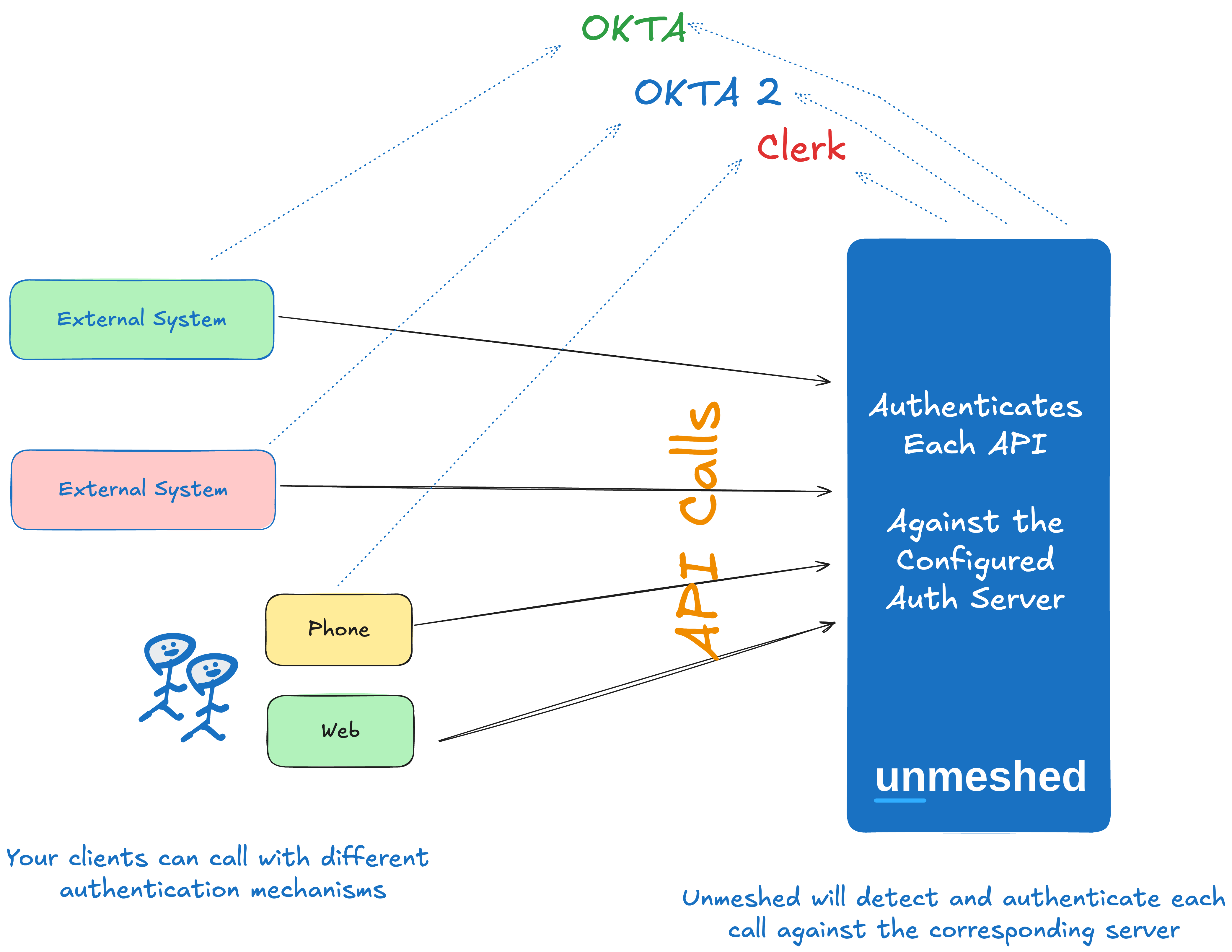
Unmeshed supports OIDC based auth servers. Support for SAML is coming soon. We also offer a built-in user password auth if you prefer to use that.
Once a user is authenticated, the corresponding claims from the user token is set to the process context which can be referred anywhere in the workflow.
Rate limiting
Rate limiting is a feature that is being built - if you need this soon, let us know and we accelerate this build.